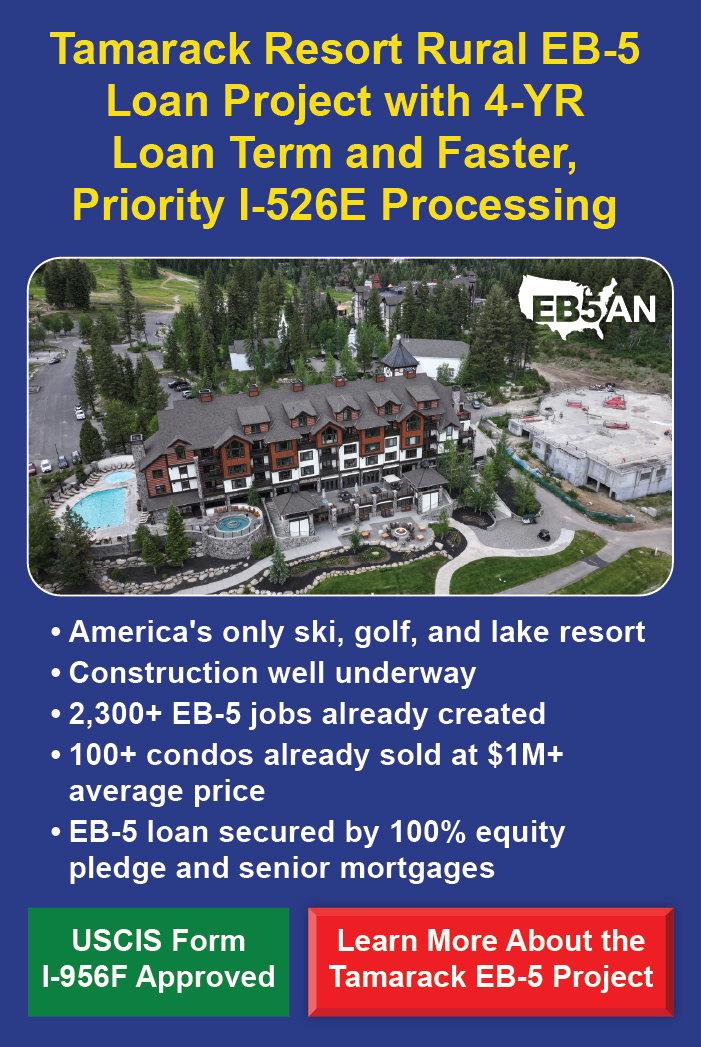
The EB-5 visa is one of the most popular investment migration visas in the world, providing a pathway to residency and eventual citizenship in the world’s biggest economy.
However, EB-5 investment involves a significant amount of money and resources. Therefore, it is essential for prospective EB-5 investors to carefully evaluate and vet potential EB-5 projects before making an investment decision.
One of the most effective ways to do proper due diligence is to ask the EB-5 project for written responses to key questions about their operations and structure. In this article, we will discuss why.
The Risks of EB-5 Investments
Asking the Right Questions
Why Written Responses Matter
Red Flags to Watch Out For
Transparent EB-5 Projects
The Benefits of Working With Experienced EB-5 Professionals
The Risks of EB-5 Investments

The EB-5 program requires a substantial capital investment of $1,050,000 into a new commercial enterprise ($800,000 if it’s in a targeted employment area) that will create at least 10 full-time jobs for U.S. workers. While the program offers a relatively quick pathway to a Green Card compared to other visa categories, there is still a level of risk involved.
Immigration risk exists because the approval of an EB-5 investor’s visa petition is not guaranteed. The investment must satisfy strict requirements and the project must fulfill its job creation obligations in order for the U.S. Citizenship and Immigration Services (USCIS) to approve the investor’s case.
If issues arise with the project, the investor could face denial of their petition and lose their opportunity for a Green Card.
Financial risk is also a factor, as EB-5 investments are typically made into new ventures that have not yet established a track record. The commercial success of the project depends on business plans being well executed and market conditions remaining favorable.
If the project struggles financially or fails completely, the investor risks losing some or all of their EB-5 capital.
There’s also the risk of fraud. There have been cases of project developers misusing or stealing EB-5 funds, making false claims about the project’s potential, or even operating completely fraudulent schemes.
Investors who fall victim to EB-5 fraud not only risk losing their invested capital but also their ability to get a Green Card. USCIS takes allegations of fraud very seriously and will deny or revoke petitions associated with fraudulent projects.
Asking the Right Questions

To evaluate the immigration and financial risk involved with a particular EB-5 project, investors need to ask key questions and get a deep understanding of key aspects of the project and offering. Some important areas to probe include:
- The project’s capital stack and use of EB-5 funds.
- Financial projections and anticipated returns.
- Targeted employment area qualification.
- Job creation methodology.
- Permits, approvals and shovel-ready status.
- Developers’ track record and experience.
- Loan versus equity investment structure.
- Exit strategy and redeployment plans.
Investors should feel free to ask detailed questions about these topics and any other issues regarding their investment. They should also insist on getting responses in writing rather than just verbal assurances.
Why Written Responses Matter
Getting written answers from an EB-5 project provides concrete documentation of the claims and commitments being made. Written communication is more formal and legally-binding than verbal discussions, which can be subject to misinterpretation or forgetfulness.
When an EB-5 project responds in writing, they create a record that investors can refer back to. If a change arises in the future, having written documentation from the project will put investors in a stronger position to show what they were told before.
Insisting on written answers also sends a message that the investor is serious about holding the project accountable. Projects that readily provide clear written responses will appreciate an investor’s diligence and desire for transparency.
In contrast, projects that avoid written communication may have something to hide.
Red Flags to Watch Out For
If an EB-5 project refuses to provide written answers to an investor’s questions, this is a major warning sign. It suggests the project might want to avoid accountability in the future.
Responses that are incomplete or inconsistent with other information the investor has gathered are also red flags. The same is true of projects that make verbal assurances that don’t align with their written materials.
Projects that won’t share important documents like financial statements, permits, or contracts, should also raise concern.
If an EB-5 project does any of the above, investors should consider walking away. The potential risks are not worth it.
Transparent EB-5 Projects
High-quality EB-5 projects will be fully transparent and responsive to investors’ requests for information. They will provide timely, written answers to questions and be willing to discuss further.
Transparent projects will share relevant financial statements, contracts, business plans and third-party verification of their projects. They will welcome investors’ efforts because they are confident their project is up to standard.
The best projects will communicate key information to investors rather than just wait to be asked. They will regularly provide progress updates and alert investors to any potential future issues
Investors can feel more secure participating in EB-5 projects that operate transparently because it helps them make the right decisions. It also shows the project’s commitment to long-term investor support and success.
The Benefits of Working With Experienced EB-5 Professionals

While doing their own research on EB-5 projects is important, investors don’t have to do it alone. Working with experienced EB-5 professionals, such as immigration attorneys and financial advisors, can provide invaluable guidance and support.
EB-5 immigration attorneys have deep knowledge of the program requirements and can help investors know their eligibility, prepare their petitions, and respond to any requests for evidence from USCIS. They can also review project documents to identify any risks.
Financial advisors who specialize in EB-5 can help investors evaluate projects from an investment perspective. They can evaluate the project’s financial structure, business plan, and economic prospects to determine if it is a sound investment. They can also help investors understand the terms of the offering and negotiate any changes.
If you’re not sure where to start, book a free consultation with EB5AN’s expert team to get started on your EB-5 journey.











